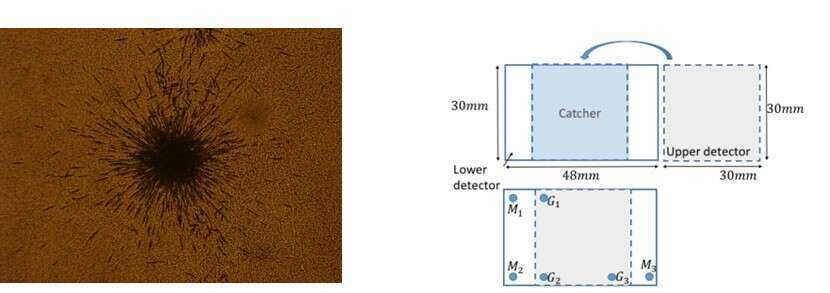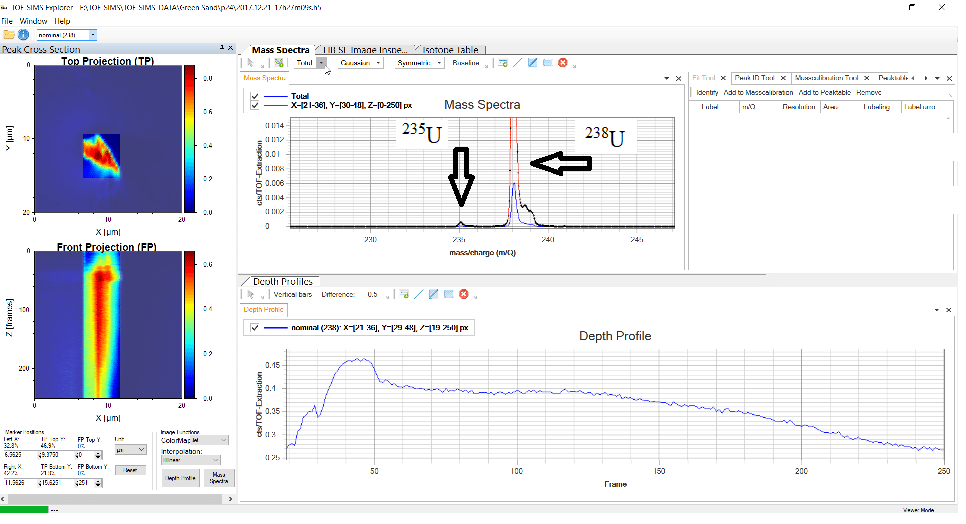
New Frontiers with Fission Track Analysis and TOF-SIMS Techniques in Nuclear Forensics.
2Unit of Nuclear Engineering, Ben-Gurion University of the Negev
3Department of Condensed Matter Physics, Charles University
4Faculty of Engineering, Bar-Ilan University
Illicit trafficking of radioactive materials is known to exist from the early days of radioactive era. The nuclear forensics deals with recognizing the materials and processes of the radioactive industry. The properties of the materials can give a hint about the source of material and its original use.
The most common radioactive material involved in illicit trafficking is uranium. Uranium is a common natural element which can be found everywhere. The cosmogenic uranium is well known and defined. The natural enrichment of uranium is varying within a small range around 0.72 % and is indicative to its source. The enrichment of the anthropogenic uranium can vary much depending on the purpose and use of the material. Different enrichments are known for individual nuclear power plants, research reactors and military uses.
Measuring the uranium properties can indicate its enrichment, presence of other elements or impurities and can help in finding its attribution, namely its origin.
To learn more about the history of found material accurate isotopic measurements are needed.
The ratio between 230Th and 234U can give a good estimation of how much time passed from the last chemical cleaning of the material. This technique is called radio-chronometry or age dating.
We developed new Lexan detectors with much better signal to noise ratio to improve sensitivity and reduce the false alarm, in figure 1.

Fig. 1. FTA (Fission Track Analysis) of natural uranium mine sample.
New Automated software can recognize the fission track (FT) automatically and give the parameters of the track, like: roundness, intensity, number of tracks and color histogram. In that program we can add ROI (region of interest) or to cancel a false positive FT identification.
Analytical equipment like TOF-SIMS (time of flight - Secondary Ion Mass Spectrometry) and ICP-MS (Inductively Coupled Plasma - Mass Spectrometer) together with new FTA software give new frontiers to the nuclear forensic research, see figure 2. The sample is a reference material IAEA-314 containing U~60ppm and Th~18ppm.
The ICP-MS is in the GSI (geophysical survey of Israel.

|
Fig. 2. TOF-SIMS (a), ICP-MS (b) and result of an automated FTA software to recognize FT (c) |
A microscope equipped with TOF-SIMS gives the ability to measure quantitatively the ratio between the different isotopes and molecules. Using the scanning electron microscope, we are able to choose the desired particle (fig. 3) which can be then analyzed using the TOF-SIMS. TOF-SIMS is a technique capable to distinguish not only between elements but also different isotopes. Knowing the ratio between the isotopes is very important as it can help us to classify the material looking for its possible origin.

Fig. 3. The microscope image of the studied sample (a) and U particle (b) using SE detector (left) or BSE detector (right).

Fig. 4. TOF-SIMS analysis of uranium particle, the isotopes 235U and 238U can be clearly seen.
References
[1] Itzhak Halevy, Uri Admon, Ernesto Chinea-Cano, Aryeh M. Weiss, Naida Dzigal, E. Boblil, Michal Dagan,
Itzhak Orion, and Roman Radus, Progress in Nuclear Science and Technology Volume # (2017) accepted

Powered by Eventact EMS